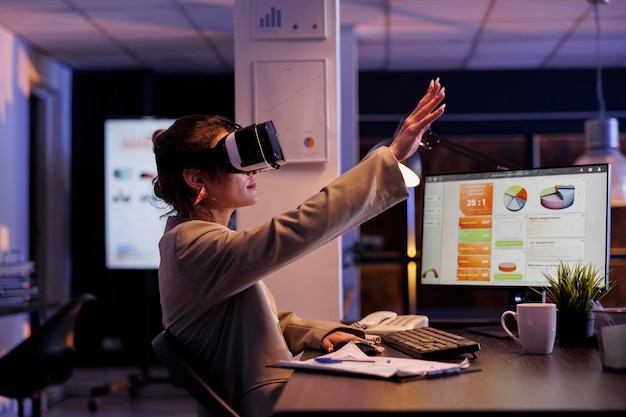Virtual reality (VR) technology has been on the rise in recent years, and its potential applications are seemingly endless. One area where it is making a significant impact is education. The traditional classroom setup of desks, chalkboards, and textbooks is gradually being replaced with virtual simulations that offer an immersive learning experience.
The integration of VR into education isn’t just about keeping up with the latest tech trends; it’s about revolutionizing the way we teach and learn. Virtual reality can transform a regular classroom into an interactive learning environment where students can explore different concepts in a more engaging manner.
For instance, itstoodayeasy.com instead of reading about ancient civilizations from textbooks, students can virtually travel back in time to witness historical events firsthand. Similarly, science lessons become more interesting when students can interact with 3D models of cells or molecules. This level of interactivity helps to enhance comprehension and retention as learners get to visualize complex topics better.
Moreover, sportgiftz.com VR provides opportunities for experiential learning which goes beyond the confines of traditional teaching methods. Students could virtually visit art galleries or museums around the world without leaving their classrooms or perform surgical procedures as part of medical training.
Furthermore, virtual reality also caters to different learning styles. Visual learners benefit from 3D representations while kinesthetic learners find value in hands-on interaction within virtual environments. It also enables personalized thinkmariajuana.com learning by allowing students to learn at their own pace and repeat simulations until they fully understand domiciliation-auto-entrepreneur.com concepts.
Also noteworthy is how VR bridges geographical gaps by creating global classrooms myhomeactive.com where students from various parts of the world can interact in real-time within a shared virtual space thus promoting cultural exchange and collaboration among them.
However exciting these prospects may be, implementing techcrumz.com VR technology into educational systems does come with challenges such as high costs associated with hardware acquisition and software development along with concerns over possible health effects related to prolonged use like dizziness or disorientation.
In spite of these hurdles though, many educators believe that benefits outweigh potential drawbacks especially cruisissafe.com considering the rapid advancements in VR technology which will likely andunlockmobile.com address these issues in the near future.
In conclusion, while virtual reality is still a relatively new tool in education, its potential to transform traditional teaching and learning methods is undeniable. As more educators begin to embrace this technology, we can expect classrooms of the future to be more interactive, engaging and personalized than ever before. The rise of VR in education truly signifies a new era for learning where boundaries are expanded beyond physical classrooms into immersive digital landscapes.

